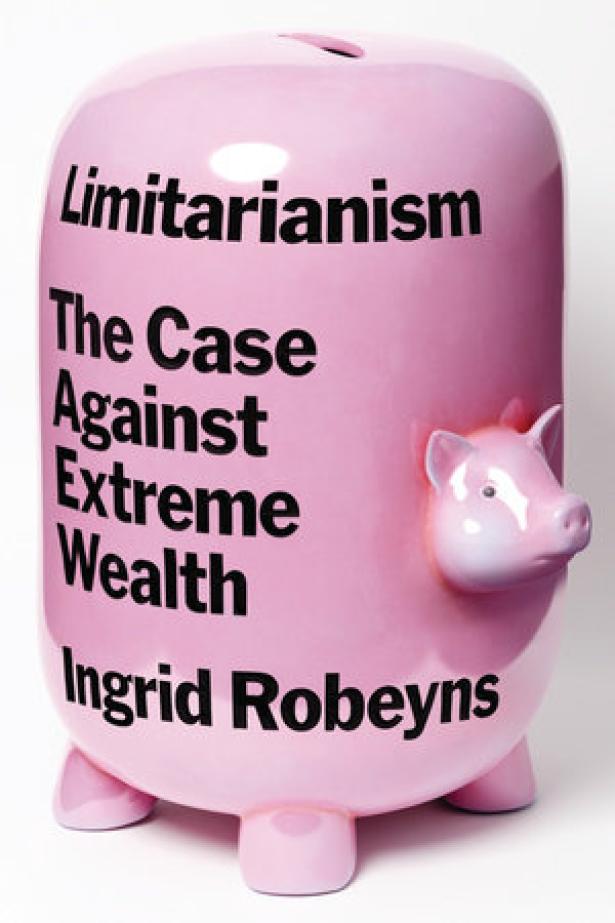Limitarianism
The Case Against Extreme Wealth
Ingrid Robeyns
Astra House
ISBN: 9781662601842
When is enough enough? This is the question at the heart of Ingrid Robeyns’ thoughtful study, Limitarianism: The Case Against Extreme Wealth. Robeyns, a professor of philosophy and economics at the University of Utrecht in the Netherlands, assesses the growing gap between that super-rich millionaires and billionaires and ever-increasing number ordinary people who populate the planet.
Robeyns’s book asks the all-important question: “How much is too much?” She argues that ever-increasing inequality poses moral, political, economic, social, environmental, and psychological problems that are harmful to the vast majority of people across the globe. Oxfam’s Inequality Inc reports that since 2020, “60% of humanity has grown poorer, [while] billionaires are now $3.3tn or 34% richer than they were at the beginning of this decade of crisis.”
The wealth of the world’s five richest men has more than doubled in that period, adding an unprecedented $464 billion to their fortunes. Nine of the world’s top 15 billionaires are US citizens. For the super-rich like Elon Musk—with personal wealth estimated at $210 billion— there may never be enough. But what about the rest of us?
The book provides invaluable information as to how the financial game is rigged, including political influence, inheritance laws, tax schemes, self-serving philanthropies, and visa scams. These schemes are essential in perpetuating and increasing the wealth of the super-rich.
“There is real value to everybody having some wealth,” Robeyns insists. But she warns, “The problem is, as it happens now, it’s so hugely unequal. The vast majority of people get almost nothing.” Suggesting the Netherlands as a model of limitarianism, she states: “In a country with a socioeconomic profile similar to the Netherlands, where I live, we should aim to create a society in which no one has more than €10m. There shouldn’t be any decamillionaires.”
She offers a moral argument about today’s wealth divide and only sketches out how limitarianism might work in practice. She suggests three broad strategies: (i) “structural action,” i.e., guaranteeing equal opportunities, a guaranteed minimum wage; (ii) “fiscal action,” i.e., imposing caps on extreme wealth; and (iii) “critical action,” i.e., encouraging the super-rich to give away their wealth.
Robeyns argues that a radical reform of taxation to concentrate on wealth rather than income is necessary. She points that inheritance is the ultimate non-meritocratic advantage, and has to be largely a collective, not a familial benefit. She also reminds readers that individuals like entertainment heiress Abigail Disney, Mackenzie Scott (ex-wife of Amazon’s Jeff Bezos), and Irish American billionaire Chuck Feeney (airport duty-free shops) have given away much of their individual fortunes.
Robeyns offers carefully researched discussions of the wealth gaps in the US and the UK. However, she offers very little historical discussion of just how long debate about the wealth gap has gone on, especially in the US. For example, J.P. Morgan, a Gilded Age plutocrat, said executives should earn no more than 20 times the pay of the lowest paid worker. A half-century later, President Franklin D. Roosevelt argued that “No American citizen ought to have a net income, after he has paid his taxes, of more than $25,000 a year [i.e., $1 million in 2024 terms];” he even proposed a 100 percent tax rate on all incomes over $25,000. And in 1973, the economist John Kenneth Galbraith argued, “The most forthright and effective way of enhancing equality within the firm would be to specify the maximum range between average and maximum compensation.”
Limitarianism doesn’t seriously address the great political challenge that defines the deepening wealth-gap crisis gripping the world. Will the super-rich give up the wealth unless they were forced to? This is most clearly expressed in the author’s repeated effort to separate her analysis for “communism,” especially “USSR-communism.” “The claim that limitarianism is essentially communism . . . is at once hilarious and deeply sad,” she writes. Going further, she adds: “communism is an economic system with political implications, whereas limitarianism is a moral principle . . .”
Robeyns’ analysis would have been strengthened had she recalled that the old Russia was dominated by a super-rich aristocracy in many ways not unlike many “first world” countries today and that the USSR emerged from a failed political act of revolution, an effort to overcome the tyranny of the super-rich.
Today, capitalism is in crisis as it undergoes an historical realignment that the political theorist John Mearsheimer calls the shift from a “uniglobal” order (i.e., with the US as the dominant player) to a “multiglobal” order (with the US augmented by China and Europe). One way this reordering is expressed is the ever-greater wealth of the super-wealthy and deepening inequality experienced by everyone else.
Robeyns’ well-meaning study provides a small light in a dark time, one can only hope that the super-rich and those in political power not only hear what she has to say but embrace it.
David Rosen's most recent book is Sex, Sin & Subversion: The Transformation of 1950s New York's Forbidden into America's New Normal. His writing critically explores American History, public policy, media technology and sexuality. His articles and book reviews have appeared in such diverse venues as Salon, Black Star News, Brooklyn Rails, Huffington Post, CounterPunch, Sexuality and Culture, The Hollywood Reporter, and others.


Spread the word